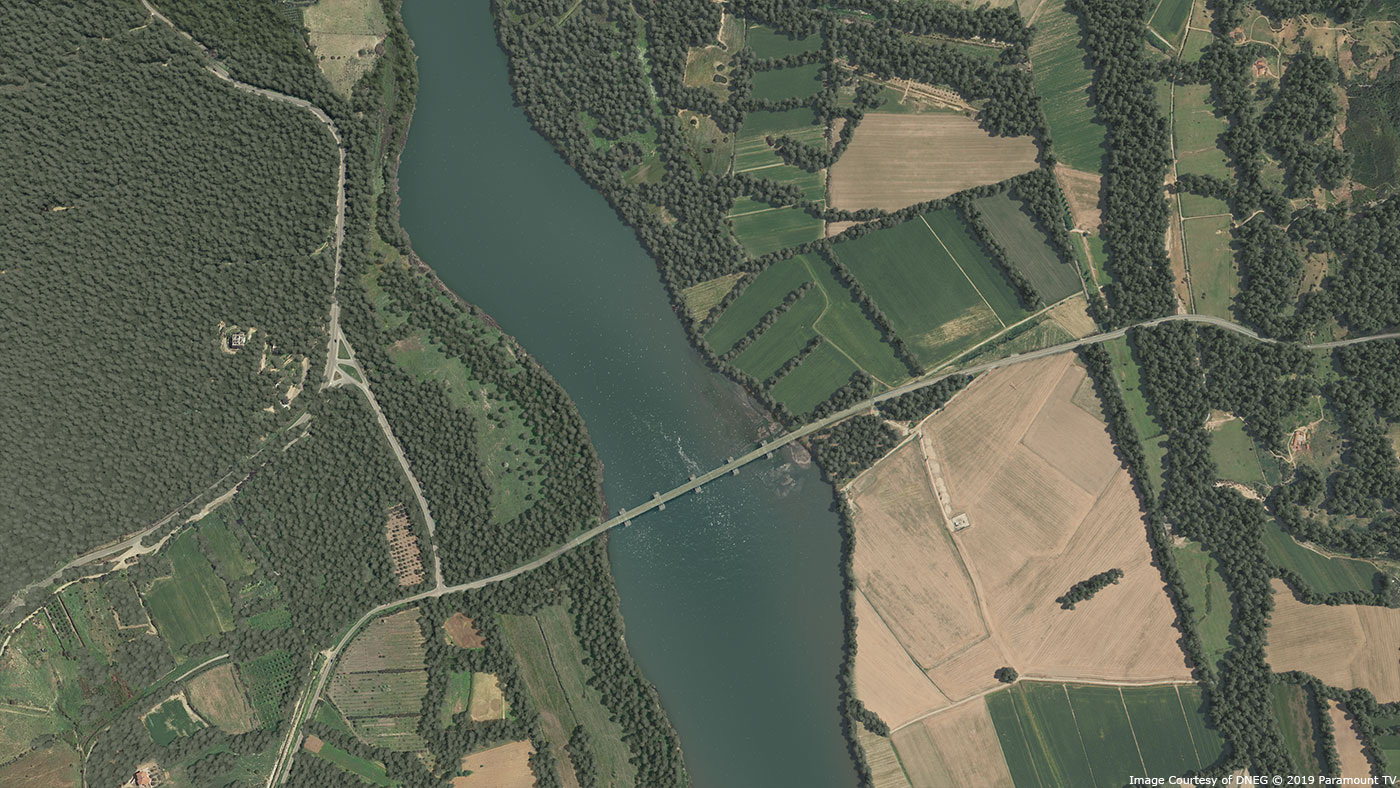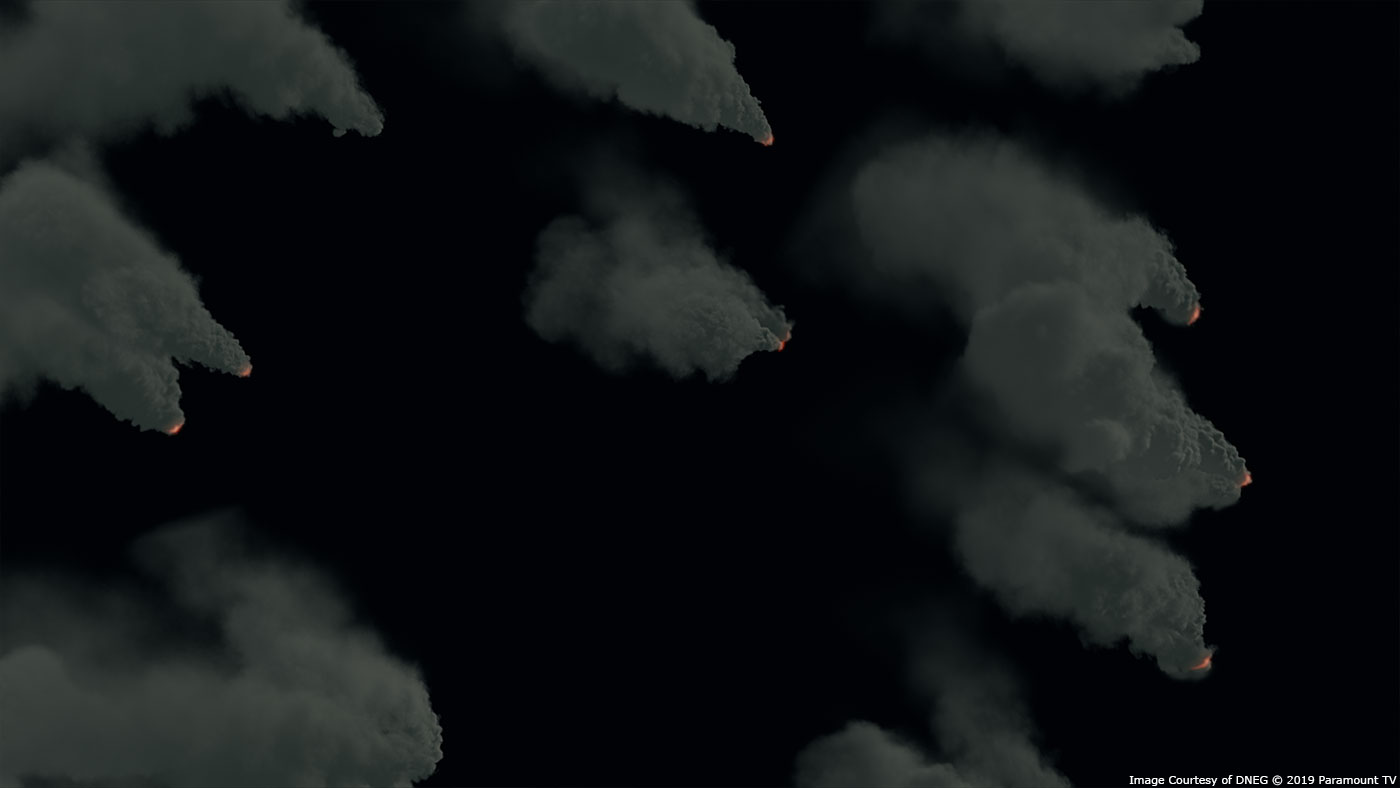In 2015, Matt Kasmir explained the work of Nvizible work on KINGSMAN: THE SECRET SERVICE. He then took care of the effects of films like EDDIE THE EAGLE and LEAGUE OF GODS. After SUBURBICON, CATCH-22 is his second collaboration with director George Clooney.
How did you get involved on this show?
George’s partner and co-director Grant Heslov contacted me, as we had all previously worked together on SUBURBICON and really enjoyed the experience.
How was this new collaboration with director George Clooney?
It was fantastic and we have built a great and easy working relationship. As this was my second show for him, he trusts me to interpret his vision and lets me get on with it. I also looked after some of the splinter units for him.
What was his expectations and approach about the visual effects?
His expectations were very high. They had to be feature film quality. DUNKIRK was our benchmark.
CATCH-22 was treated as a 6 hour film, not TV.
Can you tell us more about the previs and postvis process?
We didn’t really use much. We did rely on the reference aerial footage that we had shot and this educated the look and feel. They also stood in for postvis plates in the cut.
Can you explain in detail about the air base extension work?
As well as removing any modernity, we also added the Mediterranean Sea at both ends of the runway. In addition we populated the airfield with 65 CG planes, digital extras and support vehicles. We also had to create 6 other environments including Rome, Santa Ana and Malta.
Where was filmed the various locations?
We shot in an old airfield in Sardinia and used Sardinia’s amazing beaches for the pontoon scenes, then back to Rome for street scenes as well as all the aerial footage we took over both Sardinia and Rome.
How did you work with the stunt and SFX teams?
We used extensive pyrotechnics for the bombardment of the airfield scenes, then shot in plane interiors on a gimbal on stage on Rome.
Which stunt was the most complicated to enhance?
The bombing of the airfield was tough as we were matching CG FX explosions to practical pyros in the same shot.
How did you create the B-25 bombers?
We had two on location and used photogrammetry to digitise them. Then we created an assortment of different liveries, including the nose art which was all designed by the amazing art department.
How did you handle the animation challenge of these old planes?
The animation was based on practical shots and footage. The first thing we noticed is how slow they appear to move. They were slow to react, almost boat like. Modern aerial scenes are often sped up and you lose the scale of these huge, slow aircraft.
How was filmed and created the various backgrounds for the aerial shots?
We shot lots of aerial ref plates, some clean BGs, and others with aeroplanes in, these were then cleaned up and reprojected for the shots.
How did you manages the shots featuring that many bombers?
Most aerial shots had at least one practical aeroplane in initially. We started by adding one or two additional bombers and quickly found that we needed to replace the real aeroplanes so we had total control over the animation.
Can you tell us more about the various explosions and FX work?
We set up sim libraries for both the flak in the air, and the bombs on the ground. The hero flak was then animated to react to the planes. One of the great successes that people react when they see the show to is the “swirling flak” as it passes through the engines of the bombers.
How did you choose the various VFX vendors?
I wanted DNEG from the beginning as they had done such a nice job on DUNKIRK. We ended up using them solely in Canada, as well as an in house team based in the cutting room in LA.
How did you split the work amongst these vendors?
The DNEG TV Vancouver team did approx 800 shots and our in-house team did approx 300.
Can you tell us more about your collaboration with their VFX supervisors?
Brian Connor was our main VFX supe at DNEG TV in Vancouver. I had a great relationship with him, he was very in tune with me and the project and the results that he and his team produced speak for themselves.
Is there any other invisible effects you want to reveal to us?
We had lots of tattoo removals, some needed fully CG arms to be added.
Which sequence or shot was the most challenging?
John McWatt killing Kid Samson by flying his plane into him on the pontoon was tough as we had to stitch various shots from different locations together. It also had the greatest number of fully CG shots, as we had to fill holes in the edit. Brian and his team did a great job there and the result looks pretty seamless.
Is there something specific that gives you some really short nights?
A couple of the super long shots, such as the very last one, as we had to transition from the practical fuselage on the gimbal to full CG.
What is your favorite shot or sequence?
It’s tough to choose as there’s so much I’m happy with. I like the “Top Gun”, taking off / landing shots, as we had to replace the environment as well as add planes. I do love the hero flak shots. Despite the sleepless nights, the very final shot of the last episode also looks amazing!
What is your best memory on this show?
Spending summer flying in B-25’s in formation over Sardinia; The stuff of boyhood dreams.
How long have you worked on this show?
About 16 months in total.
What’s the VFX shots count?
1100.
What was the size of your team?
DNEG: 50-60, In-house: 3
What is your next project?
I’m just getting going on George’s next show which is a feature that I can’t say too much more about at the moment. I look forward to talking to you about it in a year or two!
A big thanks for your time.
CATCH-22 – VFX BREAKDOWN – DNEG
WANT TO KNOW MORE?
DNEG: Dedicated page about CATCH-22 on DNEG website.
© Vincent Frei – The Art of VFX – 2019































